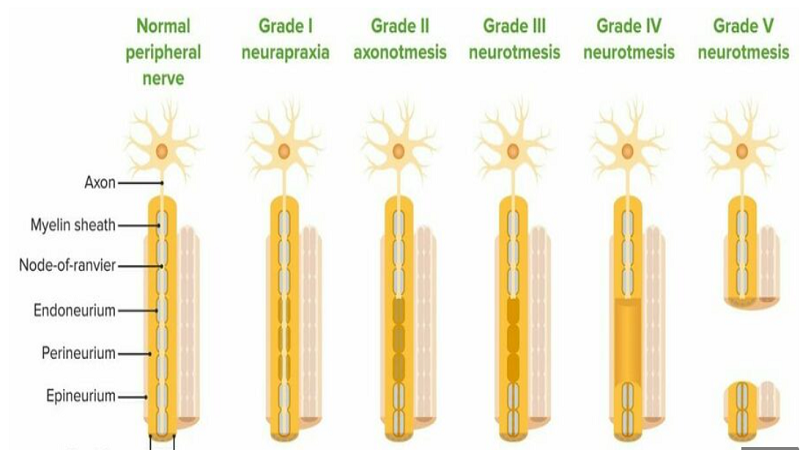4 Types of Peripheral Nerve Surgery exist outside your brain and spinal cord and could become damaged, causing pain, numbness, tingling, and other symptoms. Nerve damage usually results from injury, medication side effects, compression, autoimmune diseases, and conditions like diabetes. If symptoms don’t improve with medication, physical therapy, or nerve blocks, surgery can help. Here’s a look at four types of peripheral nerve surgeries neurological surgeons perform:
Nerve Repair
If your nerves are severed, your surgeon can perform nerve repair surgery to restore function. Neurological surgeons use various methods, including direct suturing and nerve grafting. Direct suturing involves realigning and reattaching the two ends of the severed nerve using fine stitches. The surgery is used for nerves that have maintained their length. If the damage has shortened the nerve, your surgeon uses a graft to bridge the gap between the severed ends. Your surgeon can also use stem cell therapy to stimulate nerve regeneration and restore function.
Nerve Transfer
If your nerve is severely damaged beyond what direct suturing and grafting may repair, your surgeon can perform a nerve transfer surgery. The procedure involves redirecting a nearby healthy nerve to take over the function of the severely damaged nerve. Transfer surgeries involve selecting a donor nerve that could serve its function and that of the damaged nerve. Donor nerves are usually less necessary for movement and sensation but can assume the functions of the severed nerve. After selection, the donor nerve is surgically detached from its original place and rerouted to the area where the damaged one once connected.
Tumor Removal
Benign or malignant tumors might develop on or near your peripheral nerves. Peripheral nerve tumors and brachial plexus tumors cause pressure on your nerves, resulting in pain, numbness, weakness, and other neurological issues. Removing tumors from your nerves is a delicate procedure that requires experienced surgeons. The process involves using MRIs, CT scans, and other imaging techniques to identify the tumor. If the tumor has damaged your nerve, the surgeon can perform reconstructive repair to restore function.
Nerve Release
Carpal and cubital tunnels are narrow, bonny passages in your wrist and elbow and feature nerves passing through them. Entrapment occurs when your sensory, motor, or autonomic nerves get compressed due to injury or a tumor. Nerve release is a minimally invasive surgery used to decompress or move the nerve. Decompression involves separating or cutting away the tissue pushing against the nerve. Your surgeon can also perform a neuroma surgery and neurolysis to remove scar tissue and free nerves constricted by the scar.
Find Experienced Neurological Surgeons Today
Nerve damage can heal without surgical interventions, but some conditions require repair, transfer, or decompression. Tumors pressing on nerves also require early removal, especially if they’re malignant. Speak to neurological surgeons today to find out more about nerve surgeries and how they can help. See More
